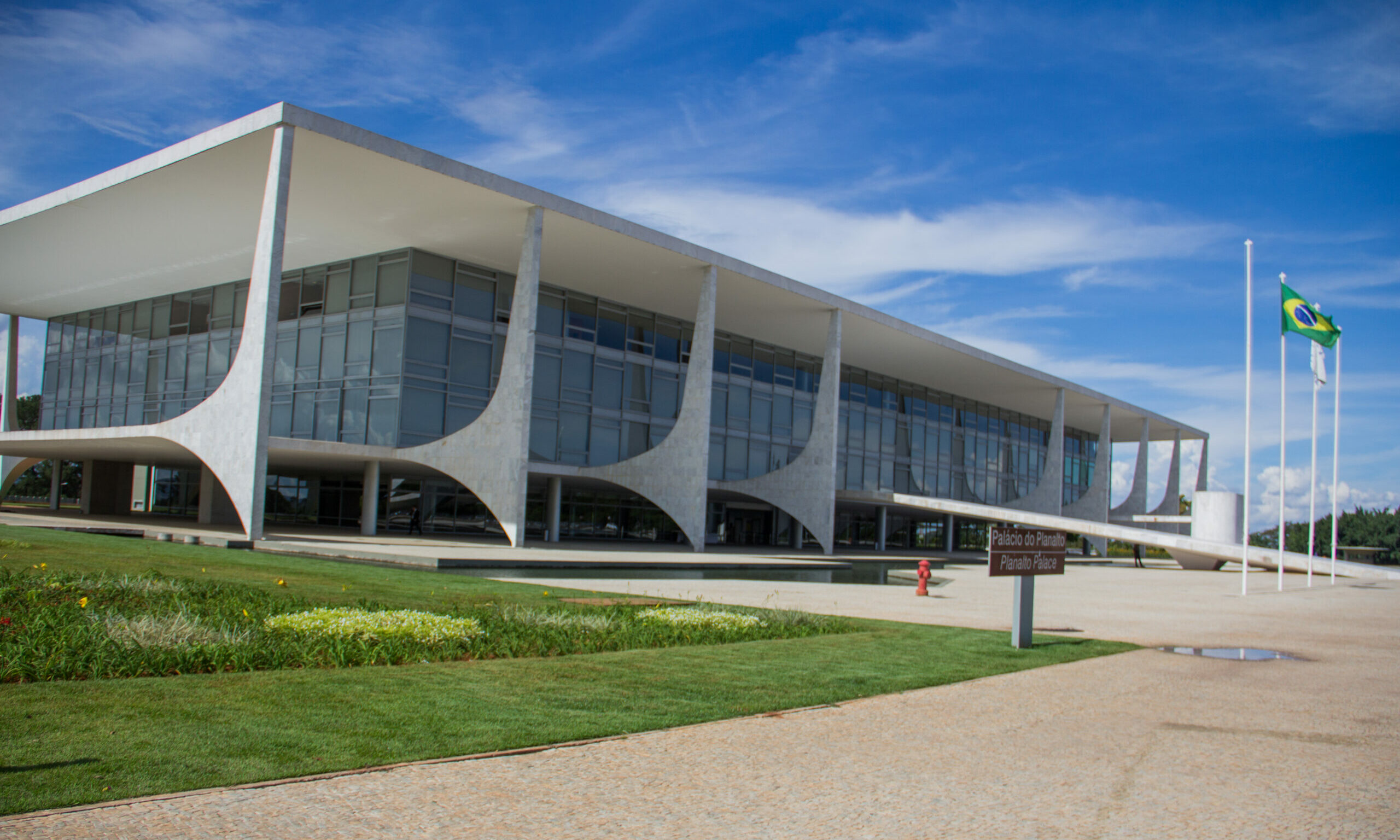
Buoyed by a left-leaning region, the newly elected Brazilian President Lula might benefit from tapping into Latin American consensus and institutions to engage with China through multilateral channels.
Following Brazil’s election of Luiz Inácio “Lula” da Silva as the country’s next president starting in January, pundits have scrutinized the incoming administration’s economic, environmental, and foreign policy. A consistent topic of interest is how Lula plans to steer Brazil’s relationship with China.
In his previous mandate from 2003 to 2010, Lula grew Brazil’s economic ties with China, building off the commodity boom to finance inequality-reducing social programs. He also signed bilateral MOUs on a slate of topics ranging from science and technology to sports and transportation. Thus far, the president-elect has remained cautious about his China stance, selecting an unobtrusive career diplomat as Foreign Minister and keeping his incoming advisors relatively opaque to the public eye.
Multilateral Engagement Takes Precedence
China can hardly be ignored by Brazil. It is Brazil’s largest trading partner, a generous source of investment, and a key partner in public diplomacy. As it has done with other countries beyond Latin America and the Caribbean, China has implemented a multipronged commercial, scientific, and diplomatic approach to engaging with Brazil in the hopes of building closer and long-lasting ties.
Yet as the author argued in a recent piece preceding Brazil’s election, China is unlikely to be a prominent focus for Lula in the wake of his ascension to power. Brazil’s economic and environmental problems, which require Lula’s immediate focus and will likely be his policy priorities, are not directly related to Chinese activity.
How, then, will Lula manage the Brazil-China relationship? If bilateral dialogue has limited utility in the short term, then Brazil-China relations may be shaped through multilateral, regional engagement. Multilateralism is an efficient, low-cost-and-potentially-high-reward strategy for continuing diplomacy when both sides have fewer immediate mutual top-priority policy areas to discuss.
To boost multilateralism, Brazil’s new left-wing president could use the ideological compatibility of the region to engage in collective bargaining for Brazil’s own foreign policy aims. Recent elections have ushered in an era of left-wing presidents across Latin America, including in Chile, Argentina, Bolivia, Peru, Colombia, Honduras, and Mexico.
The author is discounting the popular (but empirically unproven) hypothesis that China prefers to engage with left-wing governments in its overseas diplomacy. Rather, left-wing governments themselves likely already have a certain degree of ideological foreign policy cohesion and may have similar pragmatic interests that drive their external behavior. Given the prevailing context, it makes sense for Brazil to “team up” with its neighbors while managing China.
Brazil will likely seek to engage multilaterally with China in four arenas: the Belt and Road Initiative (BRI); the China – CELAC forum; MERCOSUR; and BRICS.
Weighing the Benefits of Belt and Road Insertion
China’s Belt and Road Initiative (BRI) has grown throughout Latin America and the Caribbean, counting 21 regional countries among its partner nations. As the region’s largest economy, Brazil’s continued absence from the BRI network is notable. China may seek to formally incorporate Brazil into the BRI in the coming years. However, whether Lula’s government could be incentivized to join remains an open question.
Brazil has reason to hesitate before deepening Brazil-China ties through the BRI. China is already Brazil’s top trading partner with an active investment presence, and despite a lack of Chinese policy bank or commercial bank loans to Brazil since 2020, China remains a sizeable economic influence. Brazil appears to be reaping many rewards of formal BRI accession without formally committing. Deciding to join the BRI now, in a geopolitical moment of US-China tensions, would likely be seen as a pro-China and anti-US diplomatic maneuver, which Brazil may seek to avoid.
Thus, the marginal cost of formally joining the BRI appears significantly higher than the marginal benefit. Yet, even if Brazil-China relations under Lula do not include Brazil’s BRI accession, Brazil could continue to support Chinese BRI projects in neighboring countries as a gesture of diplomatic goodwill and “hedged support.”
Reengaging in the China-CELAC Forum
Another option for multilateral engagement between China and Brazil is the China-CELAC forum. As a periodic mechanism for strategic meetings on the head of state and ministerial level between Chinese and Latin American and Caribbean officials, the forum has been active since 2015. Brazil has been absent from CELAC since 2020, when the (now outgoing) president Jair Bolsonaro asserted that it was a platform for undemocratic countries in the region to advance their agenda. Lula’s first challenge, once elected, will be to reinsert Brazil in CELAC and restore Brazil’s regional relations before using CELAC as a platform to engage with China.
Importantly, the China-CELAC forum also serves as a setting to launch Chinese financing opportunities for regional projects and Chinese soft power initiatives, which could be of interest to Brazil as domestic economic pressures rise. Special Chinese funds for infrastructure and agriculture, two of Brazil’s regional competitive advantages, could be especially appetizing to the Lula government.
Balancing China’s Growing Influence in MERCOSUR
MERCOSUR might seem like an unlikely forum for Brazil-Chinese engagement. After all, China is not a member of the bloc. Yet MERCOSUR may become one multilateral arena in which Brazil will be countering Chinese influence instead of seeking closer relations.
The issue causing friction is the intention of China and MERCOSUR member Uruguay to sign a Free Trade Agreement (FTA). According to the rules of MERCOSUR, individual countries are prohibited from negotiating agreements outside the bloc without the bloc’s approval. Uruguay and China’s actions have caused tensions within the bloc and spurred allegations that Uruguay is fracturing a united front.
As the largest economy in MERCOSUR, Brazil’s opinion holds significant weight. Lula’s predecessor, Jair Bolsonaro, largely skirted the issue, which was interpreted as an implicit endorsement of Uruguay’s actions. However, as a proponent of regional integration and South-South cooperation, Lula will likely oppose China’s perceived attempts to ‘poach’ Uruguay from what is a beneficial economic arrangement to Brazil. A China-Uruguay FTA would jeopardize MERCOSUR’s cohesion, and Brazil’s regional economic leadership, by signaling to its remaining members that national interests can be considered independently from the bloc’s interests.
Furthering South-South Cooperation with China through BRICS
The BRI, the China-CELAC forum, and MERCOSUR all illustrate how Brazil can use Latin American and Caribbean regional dynamics and institutions for multilateral diplomacy with China. The fourth format, BRICS, is an area of multilateral engagement with China that goes beyond Brazil’s immediate region.
BRICS is an economic bloc featuring Brazil, Russia, India, China, and South Africa that has been active since its 2010 summit. In particular, the bloc’s affiliated New Development Bank, headquartered in China has financed over 80 projects collectively worth over $30 billion in its five member countries. Thus far, Brazil has benefitted from 17 approved projects spanning health, urban infrastructure, and energy. During his prior 2003-2010 mandate, Lula made intra-BRICS cooperation a core pillar of his foreign policy, tapping the bloc’s allies to support Brazil’s posture on global South sovereignty, environmentalism, and economic development.
It appears that BRICS will again be a major forum for Lula to engage with China. During his recent campaign, Lula met with ambassadors of the other BRICS nations and asserted his commitment to strengthening ties. Given that Brazil has a significant number of proposed New Development Bank projects in the works, it is probable that Brazil and China will collaborate multilaterally to disburse funding and execute these initiatives.
However, growing US-China antagonism could throw a wrench into Lula’s plans to prioritize BRICS relationships. Given that Lula also promised closer Brazil-US ties under his administration, he may find that one comes at the expense of the other.
Looking Ahead to 2023 and Beyond
In the absence of immediate priority areas of collaboration with China, Lula’s government will likely favor a conservative, multipronged, and multilateral approach to Brazil-China relations. Through BRI, the China-CELAC forum, and BRICS, the Lula government may strengthen ties with China while cautiously guarding against the US’s predictable anti-China response. In the fourth arena, MERCOSUR, Brazil may find that its multilateral interests are in direct opposition to China’s.
Given the oft-glacial pace of multilateral institutions’ decision-making, we should expect that the dynamics above will play out behind closed doors and informal channels instead of through media headlines or immediate projects and policies. In the long run, this delicate balancing act will require Lula’s full attention to detail, prioritization of allies, and policy pragmatism to ensure that Brazil and China can smoothly navigate the next chapter of their relationship.
The views represented in this piece belong to the author and do not represent the institutional position of the Atlantic Council or its affiliate centers.
Written by
Isabel Bernhard
isabernhdIsabel Bernhard is a Program Assistant at the Atlantic Council’s Adrienne Arsht Latin America Center, specializing in China-Latin America relations and Brazil.


